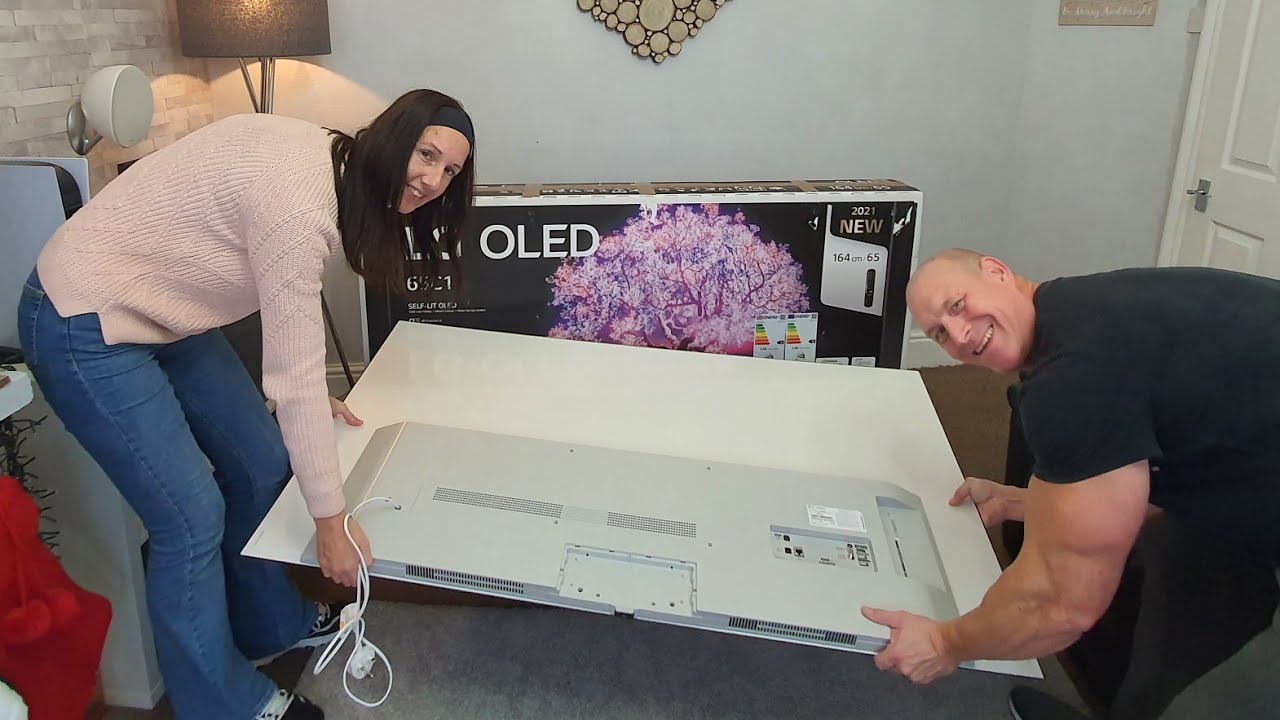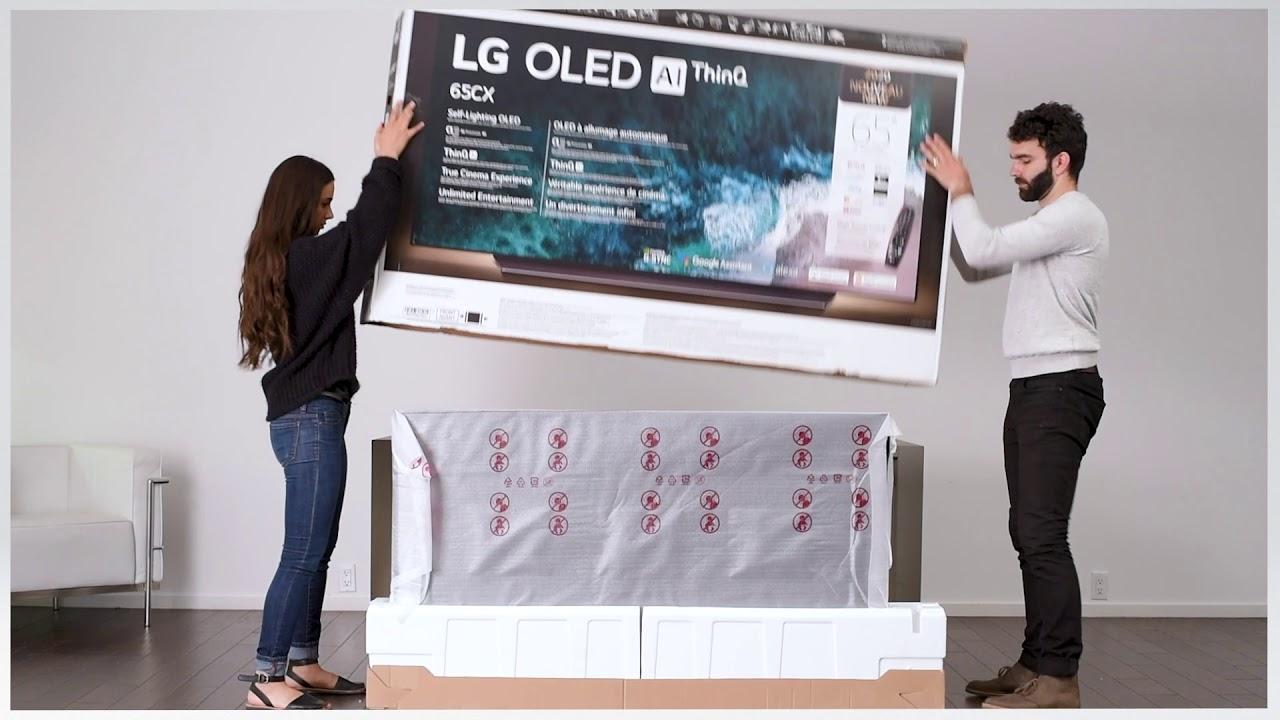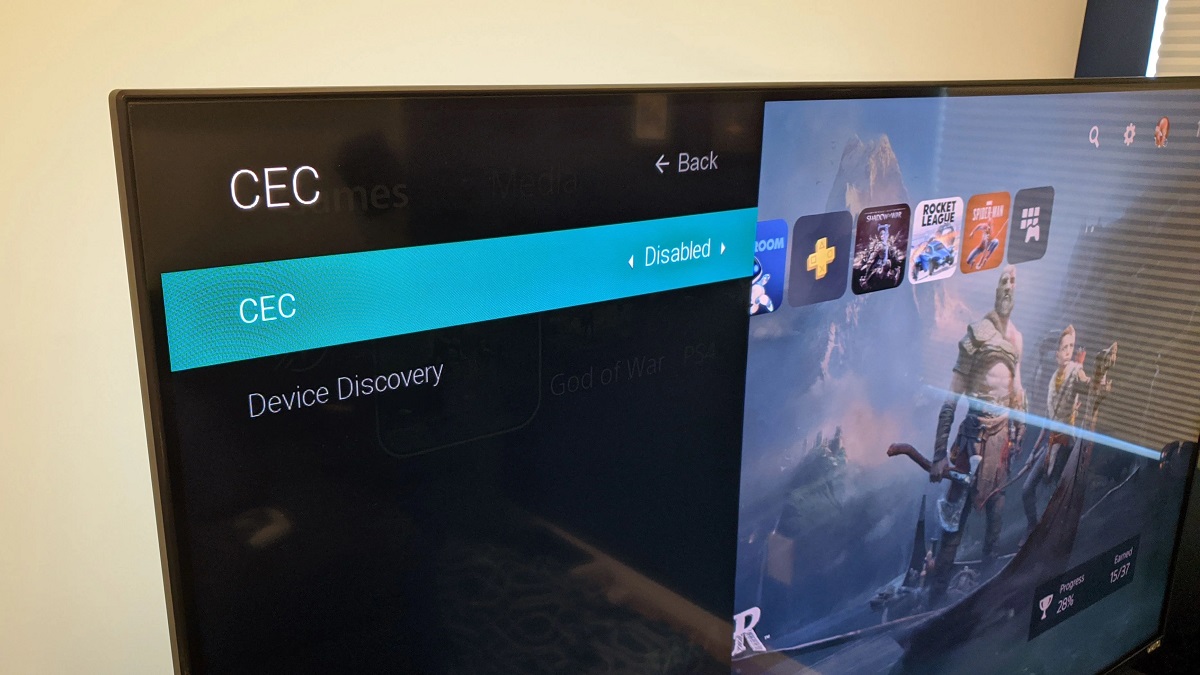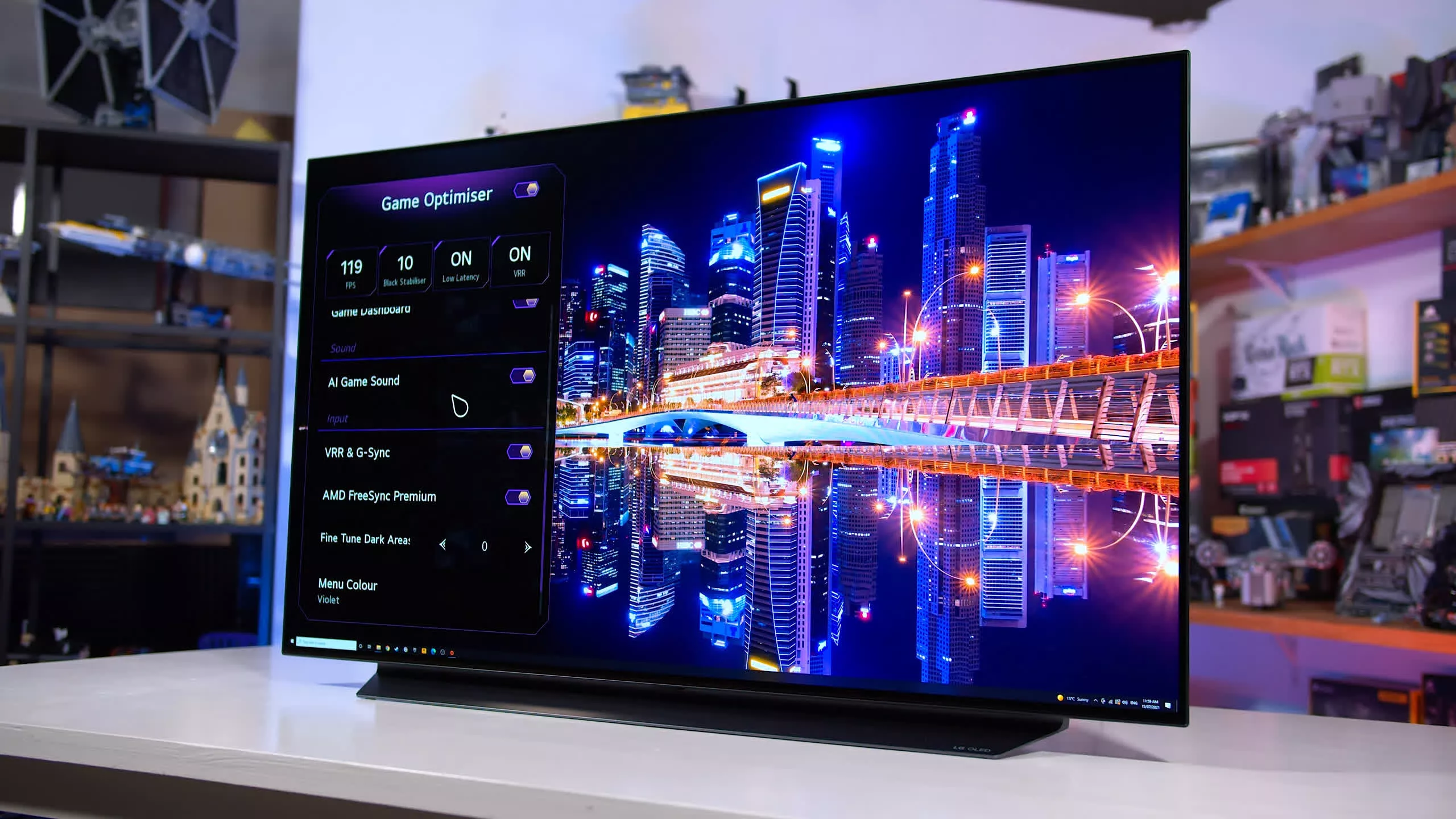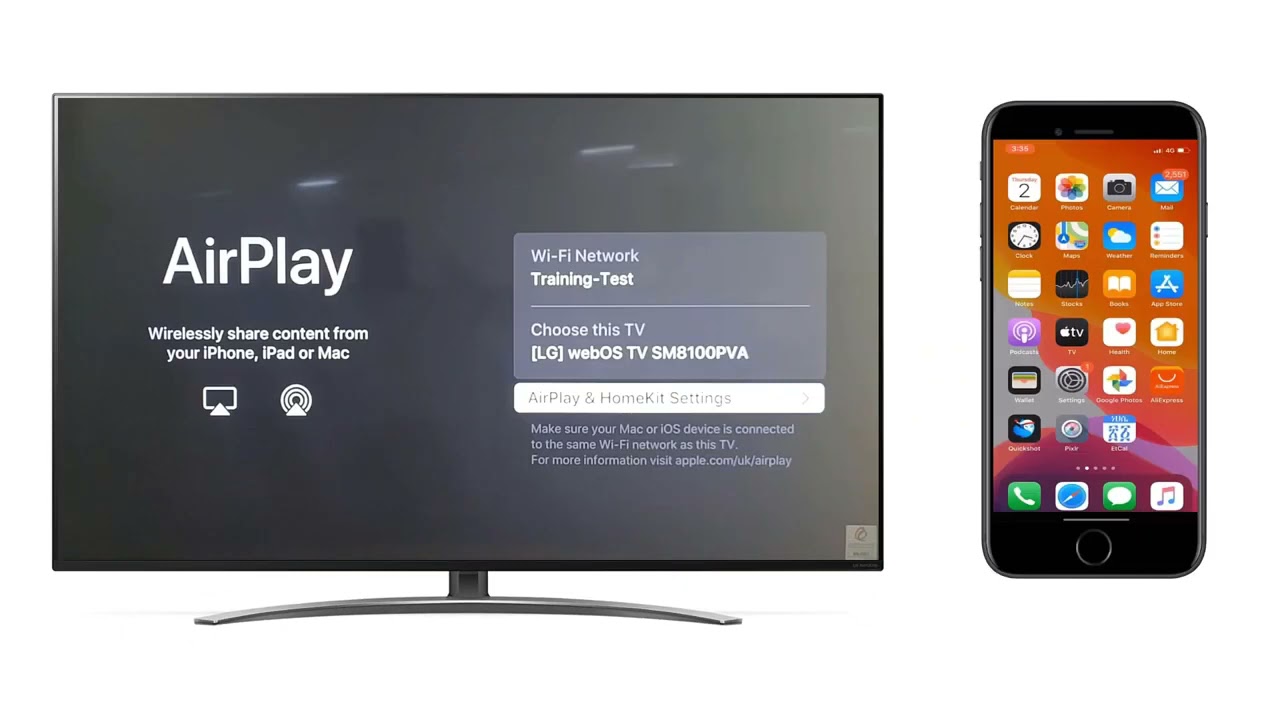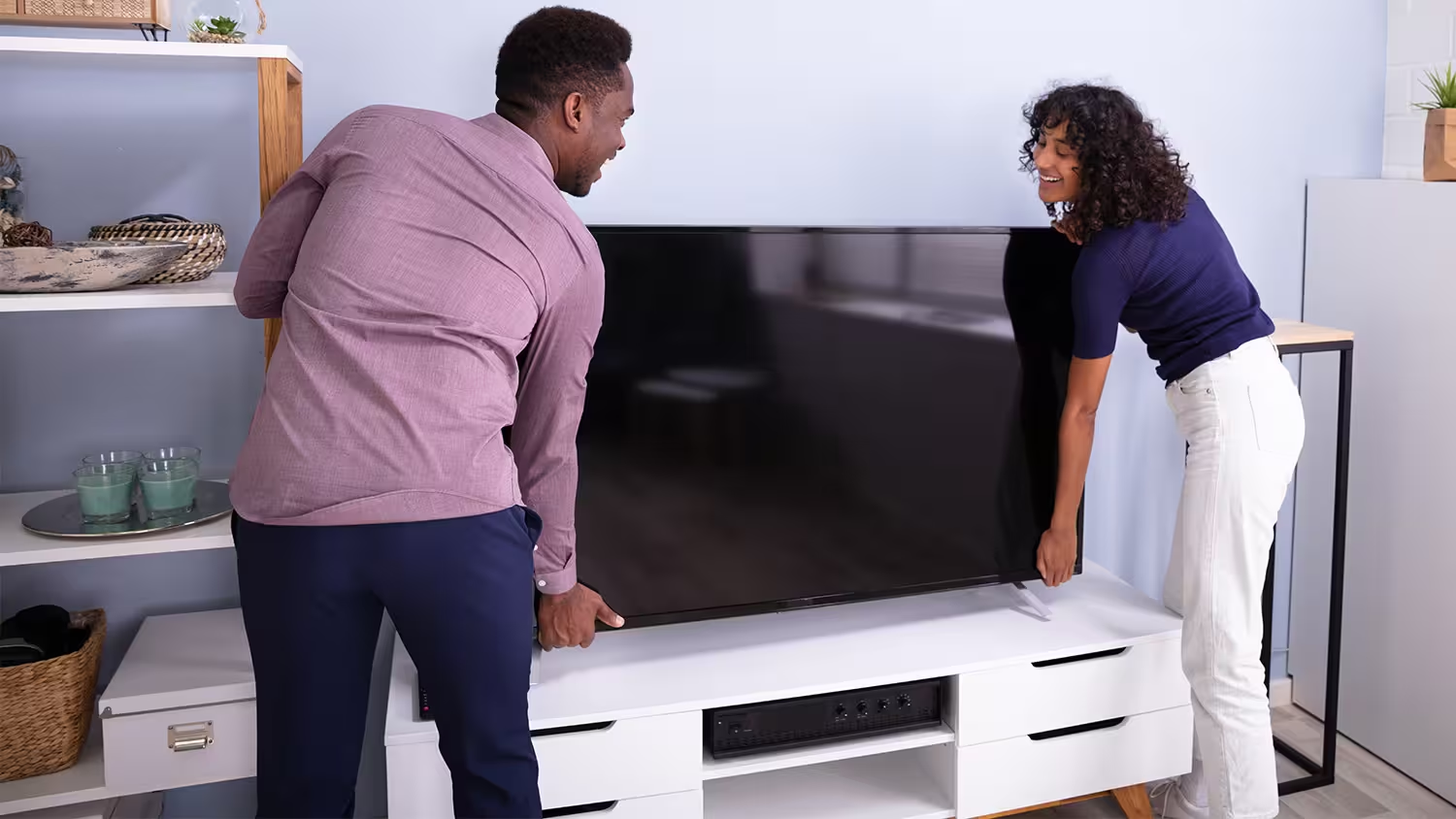Introduction
Moving can be a daunting task, especially when it comes to delicate and expensive electronics like OLED TVs. These slim and fragile screens require careful handling to ensure that they arrive at their new destination unscathed. Whether you are relocating to a new home or simply rearranging your living space, knowing how to properly move an OLED TV is essential.
In this guide, we will provide you with a step-by-step overview of the process involved in moving an OLED TV. From preparing for the move to safely transporting and setting up the TV in its new location, we will cover everything you need to know to ensure a smooth and successful move.
It’s important to note that OLED (Organic Light-Emitting Diode) TVs are known for their superior picture quality and slim design. However, they are also more delicate compared to traditional LCD or LED TVs. The thin glass panels used in OLED screens are prone to damage, especially from pressure or impact. Therefore, extra caution and proper packing techniques are crucial when it comes to moving these TVs.
Before we dive into the specifics of moving an OLED TV, it’s important to gather the necessary materials and tools to facilitate a safe move. This includes packing supplies such as bubble wrap, packing tape, moving blankets, and a sturdy box or TV-specific packaging for transportation.
Now that you have a brief overview, let’s move on to the next section, where we will discuss how to prepare for the move of your OLED TV.
Preparing for the Move
Before moving your OLED TV, it’s essential to take initial steps to ensure a smooth and safe relocation. Proper planning and preparation will help minimize the risk of damage during transit. Here are some key points to consider when preparing for the move.
1. Measure and assess the new space: Start by measuring the dimensions of the area where you intend to set up your OLED TV in the new location. This will help ensure that the TV fits properly and allows for optimal viewing angles. Assessing the space will also help you plan the positioning of other furniture and equipment.
2. Unplug and disconnect: Before moving your OLED TV, make sure to disconnect all cables and accessories. This includes the power cord, HDMI cables, audio cables, and any other peripherals connected to the TV. Safely bundle and label the cables to avoid confusion during the setup process.
3. Take pictures or make notes: It’s a good idea to take pictures or make notes of the current setup and connections of your OLED TV. This will help you recreate the setup more easily in the new location and ensure that everything is properly connected.
4. Secure loose parts: Check for any loose parts or accessories, such as detachable stands or wall mount brackets. Secure these parts either by reattaching them to the TV or by packing them separately to prevent damage during transit.
5. Remove wall mounts: If your OLED TV is currently mounted on the wall, carefully remove it from the wall mount. Follow the manufacturer’s instructions to avoid any damage. Keep all mounting hardware in a labeled bag to ensure easy reinstallation in the new location.
6. Clean the screen: Before packing the TV, use a microfiber cloth to clean the screen gently. Avoid using any harsh chemicals or abrasive materials that could damage the screen. A clean screen will not only prevent dirt from scratching the surface but also enhance the viewing experience in the new location.
7. Gather packing materials: To protect your OLED TV during the move, gather the necessary packing materials. This may include bubble wrap, foam padding, packing tape, and sturdy moving blankets. For added protection, consider investing in a TV-specific box or packaging designed to withstand the rigors of transportation.
By following these preparation steps, you will create a solid foundation for moving your OLED TV. In the next section, we will discuss how to properly package and protect your TV for transportation.
Packaging and Protecting the OLED TV
Properly packaging and protecting your OLED TV is crucial to ensure that it remains safe and intact during the moving process. This section will guide you through the steps required to package and protect your TV effectively.
1. Start with a clean and padded surface: Find a clean and soft surface, such as a large table or a clean carpeted area, to work on. Place a soft cloth or blanket on the surface to provide a cushioned area for handling the TV.
2. Wrap the TV with bubble wrap: Begin by wrapping the entire OLED TV in a layer of bubble wrap. Ensure that the TV is completely covered, focusing on the screen, edges, and corners. Use packing tape to secure the bubble wrap in place, making sure not to apply too much pressure on the screen.
3. Add an additional layer of foam padding: After wrapping the TV in bubble wrap, add an extra layer of foam padding for added protection. Cut or shape the foam padding to fit the contours of the TV, paying special attention to the corners and edges. Secure the foam padding with packing tape.
4. Use a TV-specific box or reinforce a sturdy box: If you have a TV-specific box, follow the manufacturer’s instructions to properly position the wrapped TV inside. If you don’t have a TV-specific box, find a sturdy box that is slightly larger than the TV. Reinforce the box with additional packing tape to provide extra strength and support.
5. Fill any empty spaces: To prevent movement or shifting during transportation, fill any empty spaces inside the box with packing peanuts, crumpled paper, or foam padding. This will provide additional cushioning and stability for the TV.
6. Label the box: Clearly label the box as “Fragile” or “OLED TV” to alert movers and yourself to handle it with care. It’s also a good idea to indicate which side is up to ensure the box is oriented correctly during transportation.
7. Secure the box: Seal the box with packing tape, making sure all the seams are securely closed. Give the box a gentle shake to ensure it is properly sealed and there is no movement inside.
By following these packaging and protection guidelines, you are taking the necessary precautions to safeguard your OLED TV during the move. In the next section, we will discuss how to dismount and detach the TV properly.
Dismounting and Detaching the OLED TV
Before you can safely transport your OLED TV, it’s important to properly dismount and detach it from its current setup. This section will provide you with step-by-step instructions on how to dismount and detach your OLED TV with care.
1. Consult the user manual: Refer to the user manual that came with your OLED TV for specific instructions on how to dismount and detach it safely. Every TV model may have slightly different dismounting and detaching procedures.
2. Gather necessary tools: Prepare the tools you will need to dismount and detach the TV, such as a screwdriver or wrench. Check the user manual or online resources to determine the specific tools required for your TV model.
3. Power off the TV: Make sure your OLED TV is turned off and fully powered down before proceeding with the dismounting and detachment process. This will minimize the risk of electrical mishaps during the process.
4. Remove any attached peripherals: Disconnect any peripherals connected to the TV, such as gaming consoles, media players, or sound systems. Safely remove cables and accessories, and organize them for easy reconnection in your new location.
5. Take pictures or notes: Before dismounting, take pictures or make notes of how the TV is mounted and connected. This will help you recreate the setup accurately in the new location. Pay close attention to the positioning and arrangement of cables.
6. Dismount the TV from the wall or stand: If your OLED TV is mounted on the wall, carefully remove it from the wall mount bracket, following the manufacturer’s instructions. If it is placed on a stand, check for any screws or fasteners securing the TV to the stand and loosen them before lifting the TV off the stand.
7. Pack the mounting hardware: Keep all the mounting hardware, including screws, wall mounts, or stand pieces, in a labeled bag. Store it securely with the other TV accessories to ensure easy reassembly in the new location.
8. Remove the base or stand: If your OLED TV has a detachable base or stand, look for any locking mechanisms or screws that secure it to the TV. Unscrew or release the mechanism and carefully detach the base or stand.
9. Wrap and protect any detachable parts: If there are any detachable parts, such as the base or stand, wrap and protect them separately using bubble wrap or foam padding. Secure them with packing tape and label them for easy identification during the unpacking process.
By following these steps, you can safely dismount and detach your OLED TV, preparing it for transportation to its new location. In the next section, we will discuss the best practices for safely transporting your OLED TV.
Safely Transporting the OLED TV
Transporting your OLED TV requires careful handling and attention to ensure its safety during the move. This section will guide you through the best practices for safely transporting your OLED TV.
1. Use a secure and padded vehicle: Choose a vehicle with adequate space to safely transport your OLED TV. Ideally, a well-padded and enclosed vehicle, such as a moving truck or SUV, will provide the best protection during transit. Avoid placing the TV in a vehicle where it can be exposed to extreme temperatures or excessive vibrations.
2. Keep the TV upright: It’s essential to transport your OLED TV in an upright position at all times. Avoid laying it flat or placing it on its side, as this can increase the risk of damage to the screen or internal components. Secure the TV in an upright position and use straps or bungee cords to keep it stable during transportation.
3. Ensure proper support: When loading the TV into the vehicle, make sure it is properly supported and cushioned. Place it on a soft blanket or padding to prevent any impact or vibrations during transit. Avoid stacking heavy items on top of the TV that could potentially damage the screen.
4. Drive carefully and avoid sudden movements: Be cautious while driving and avoid sudden movements, sharp turns, or abrupt stops that can jostle or damage the TV. Drive smoothly and anticipate any bumps or potholes on the road. Consider taking a more cautious route if it provides smoother and safer driving conditions.
5. Prevent exposure to extreme temperatures: OLED TVs are sensitive to extreme temperatures, so it’s important to shield them from excessive heat or cold. Avoid leaving the TV in a hot or cold vehicle for an extended period. If necessary, utilize climate-controlled storage or take measures to insulate the TV from temperature fluctuations during transportation.
6. Check on the TV periodically: If you have a long journey, it’s a good idea to periodically check on the TV during stops. Ensure it remains securely positioned and there are no signs of damage or movement. If any adjustments or additional padding are needed, make the necessary arrangements before continuing the journey.
7. Handle with care during unloading: When unloading the TV at the new location, exercise caution and care. Use proper lifting techniques and avoid any sudden movements or impacts. Carefully position and place the TV in its new space, ensuring stability and safety.
By following these practices, you can transport your OLED TV with confidence, minimizing the risk of damage and ensuring its safe arrival at its new destination. In the next section, we will discuss how to set up your OLED TV in its new location.
Setting up the OLED TV in the New Location
Once you have safely transported your OLED TV to its new location, it’s time to set it up and enjoy your favorite shows and movies. This section will provide you with step-by-step instructions on how to set up your OLED TV in its new environment.
1. Choose the ideal placement: Select the perfect spot to position your OLED TV in the new location. Consider factors such as viewing angles, natural lighting, and distance from seating areas. Ensure that the TV is at a comfortable eye level and provides an unobstructed view.
2. Unpack the TV: Carefully remove the TV from its packaging, taking caution not to damage the screen. Remove any bubble wrap or protective covers that were used during transportation. Be gentle and avoid using sharp objects that may scratch or harm the TV.
3. Connect the power: Plug in the power cord of your OLED TV into a suitable power outlet. Ensure that the outlet is in good working condition and can handle the electrical requirements of the TV. Avoid using extension cords or power strips unless they are of high quality and provide sufficient power protection.
4. Attach the base or stand: If you previously detached the base or stand, now is the time to reattach it. Follow the manufacturer’s instructions and use the appropriate screws or locking mechanisms to secure the base or stand to the TV. Ensure the TV is stable and balanced once the base is attached.
5. Connect external devices: Begin connecting the external devices, such as gaming consoles, Blu-ray players, or streaming devices, to your OLED TV. Use the labeled pictures or notes you took during the dismounting process to guide you. Connect each device to the appropriate input ports on the TV, ensuring a secure and snug connection.
6. Set up the TV settings: Power on the TV and navigate the on-screen menus to configure the desired settings. This includes selecting the language, setting up a Wi-Fi connection, and adjusting picture and audio settings to your preference. Refer to the user manual for detailed instructions on the TV’s menu navigation and customization options.
7. Test the TV: Finally, test the functionality of your OLED TV to ensure it is working properly. Switch channels, play content from different devices, and adjust the settings as needed. Check for any abnormalities or issues, and consult the user manual or contact customer support if necessary.
With these steps, you can successfully set up your OLED TV in its new location and enjoy your favorite entertainment with stunning picture quality.
Conclusion
Moving an OLED TV can be a delicate process, but with careful planning and proper execution, you can ensure its safe relocation to a new location. By following the steps outlined in this guide, you can protect your OLED TV from damage and enjoy uninterrupted entertainment in your new space.
Remember to start by measuring and assessing the new location, preparing the TV for the move by unplugging and disconnecting cables, and taking pictures or notes of the setup. Then, properly package and protect the TV with bubble wrap, foam padding, and a sturdy box, ensuring it is labeled as fragile.
When it’s time to dismount and detach the TV, consult the user manual for specific instructions, gather the necessary tools, and remove any attached peripherals. Take extra care to keep the TV upright and secure during transportation, driving cautiously and avoiding extreme temperatures.
Finally, properly set up the TV in its new location by choosing the ideal placement, unpacking it carefully, connecting the power and external devices, and adjusting the settings according to your preferences. Test the TV to ensure everything is in working order and enjoy the crisp and vibrant display of your OLED TV in its new home.
By following these guidelines, you can confidently move your OLED TV without compromising its performance and longevity. Remember, the key is to handle the TV with care, protect it during transit, and set it up appropriately in its new location. Happy moving!







